

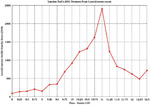



|
|
|
Mt. Stromlo Bushfire |
||
| [chongo's home] [Astronomy] [Mathematics] [Prime Numbers] [Programming] [Technology] [contacting Landon] | ||
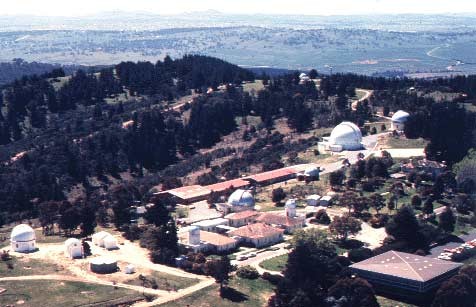
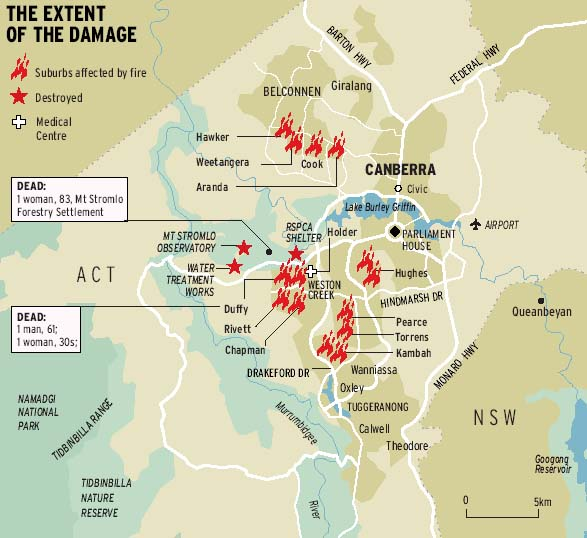
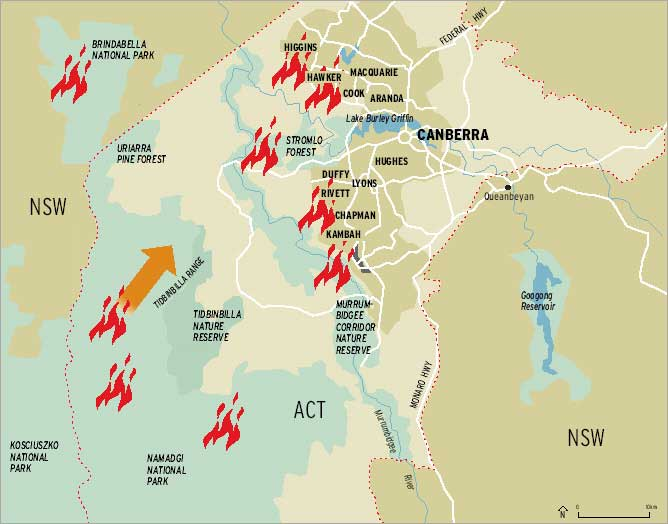

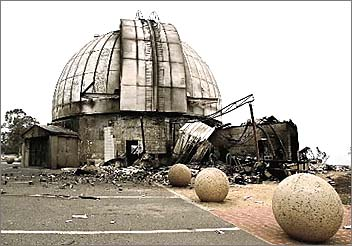
Image credit:
Sky & Telescope
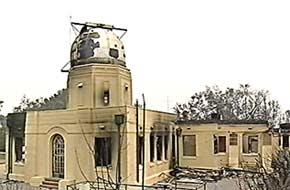
Image credit:
Sky & Telescope
The news is carrying details of the loss, devastation, and deaths related to one of Australia's worst bush fires in history. I'd like to focus on one small aspect of the disaster: the loss of the Mt Stromlo observatory facilities.The loss of Mt. Stromlo Observatory facility is very great loss.
Established in 1924, the Commonwealth Observatory at Mount Stromlo on the outskirts of Canberra. Commonwealth Observatory was recognized for its important research into the origin and future of the universe.
Astronomers at Mount Stromlo made outstanding contributions to astronomy. It would be difficult to list all of the important contributions to Astronomy made by the people working at Mt. Stromlo. Now, a few come to mind:
- Stromlo research in the 1950s provided the first clue that the Magellanic Clouds had evolved differently from our own galaxy. These results gave us important insights into galactic evolution.
- In the 1990's, astronomers from Stromlo and Sliding Springs (many km away from the fire area) showed that about 90% of disc galaxies (such as our own) are greatly influenced by ''dark matter'', in their galaxies' halos.
- They made important observations in the first hours after Supernova 1987A (the first naked eye supernova in several centuries of years) was discovered.
- Then there is the sort of work such as the Stromlo Abell Cluster Supernova Search
- The Massive Compact Halo Objects (MACHO) project that was the first to record many microlensing events in our Galaxy as well as in the Large Magellanic Cloud.
- Then there was all of that tedious, but vital work of spectral classification of southern stars.
- Many of the first parallax distances to Southern stars were first made at Stromlo.
- The list goes on and on ... I am sorry that I must leave out so many other significant contributions!
One of the principal instruments at Stromlo was the 74-inch (188-cm) reflecting telescope. The 74-inch telescope was erected in 1953, and until the completion in 1974 of the 3.9m Anglo-Australian Telescope at Siding Spring, this was the largest telescope in the Southern Hemisphere. In 1982, it was used to discover the fossil star CD-38245: a star so old that it is made almost purely of gases left over from the big bang.
It also was home scopes such as the robotic 50-inch (127-cm). It was an excellent example of how an older telescope could be outfitted with new controls and instruments to perform innovative work. The MACHO project was conducted on the 50 inch.
Two historical scopes come to mind, the Oddie, and the Yale-Columbia telescope:
The Oddie, was a wonderful 9-inch Newtonian telescope. The Victorian MP, James Oddie, presented this telescope to the Commonwealth government for use in the proposed Commonwealth Observatory. It was installed on the site at "Mt Strom" (as Stromlo was originally known) in September 1911. Over the years the Oddie telescope has made valuable contributions to Southern Hemisphere astronomy; it did some of the first measurements of the brightness, color and spectral classification of southern stars.
The Yale-Columbia telescope 26-inch Grubb long-focus refractor was erected at this site for the determination of parallaxes of southern stars (it was the largest refractor in the southern hemisphere when first installed.
Moreover, there were other scopes as well ... But alas, from what can be seen from the air at this time, most, if not all of those telescopes have been lost. At appears that heat from the burning of the nearby bush was hot enough to melt many of the domes at the observatory.
The Canberra Astronomical Society used the Stromlo lecture hall for their monthly meetings. During public nights, the public had access to a domed C14 scope, the Oddie, and a number of scopes brought to the site by members ... all through the hard work and generous efforts of the Canberra Astronomical Society.
I had the privilege of observing at Mt Stromlo several times and spoke at one of the CAS meetings. I still can recall flying down from the US to a CAS member's home to see SN1987A. I was there only 36 hours after the naked eye supernova was first observed. I still recall seeing the single star, at a distance of over 168,000 light-years, change in color and rightness over the course of an evening. I was one of the most important astronomical events I have had the honor to witness. I recall that every scope up at Mt Stromlo was all pointed at the Large Magellanic Could where SN 1987A was blazing away. The previous observing board schedule was canceled as people raced to collect as much early critical data as they could in the early hours of the event.
I had the privilege of being with the members of the Canberra Astronomical Society on two of my several total solar eclipses: 1991 in Hawaii, US and most recently the 2002 eclipse in Ceduna, AU.
(Both trips count among my several successful viewings of solar totality. Although the 1991 Hawaii was a close call that was saved because my friend (the one who introduced me to the CAS) broke his arm a very short time before the Eclipse ... which allowed both of us to have a full view of Totality in Hawaii ... but that is another story!)I look forward to meeting with many of these same people when we go to Antarctica for the 2003 solar eclipse.
My best wishes and heart felt sorrow go out to all of those people who worked so hard to make Mt. Stromlo such a wonderful place for the public to visit and who helped the observatory make many important contributions to Astronomy. Much of what was lost cannot be replaced. Still it is my hope that those who are left will be able to rebuild something anew out this tragedy.
|
© 1994-2013
Landon Curt Noll chongo (was here) /\oo/\ $Revision: 8.1 $ $Date: 2022/07/08 00:20:45 $ |